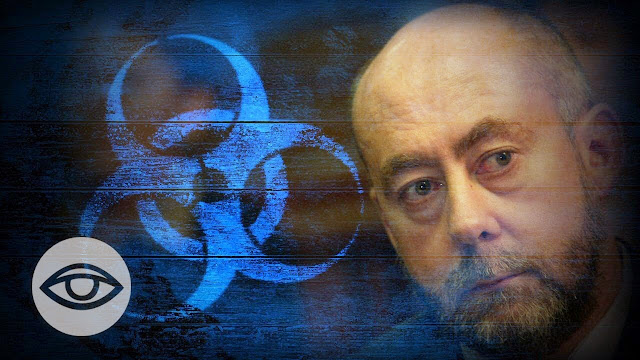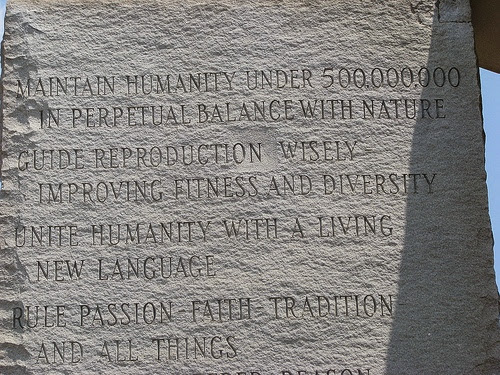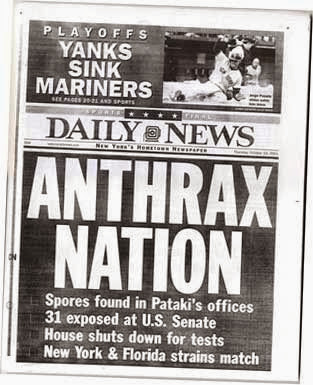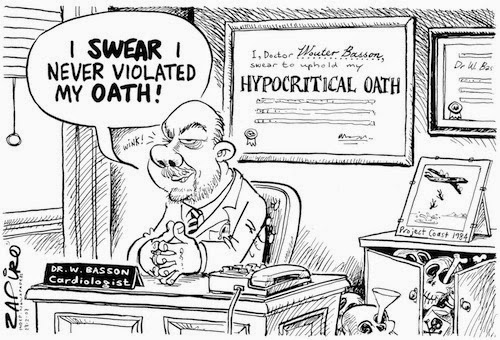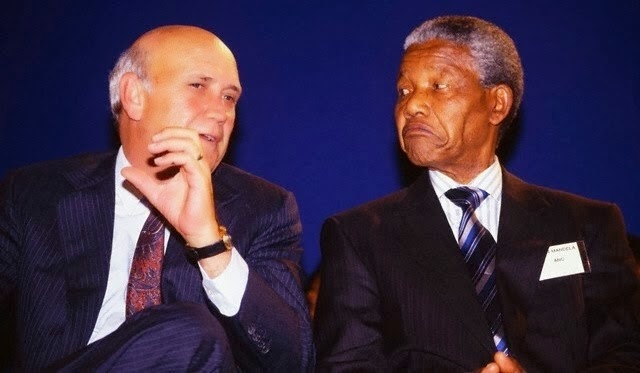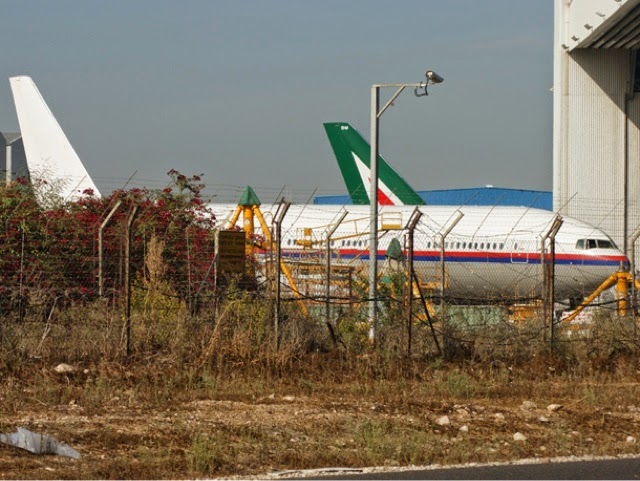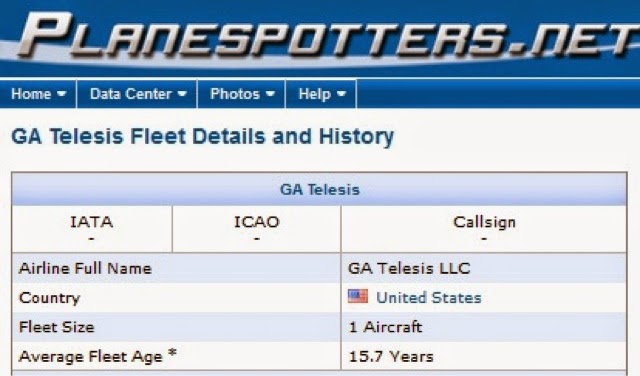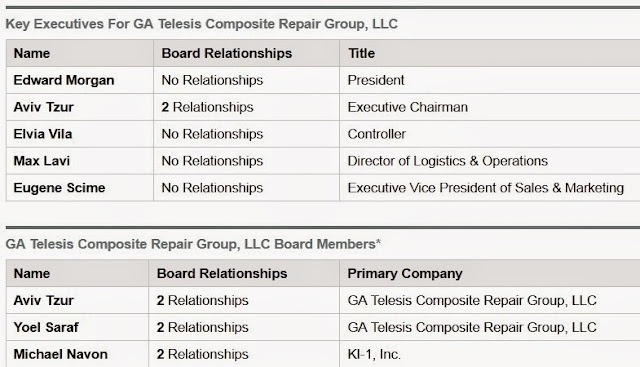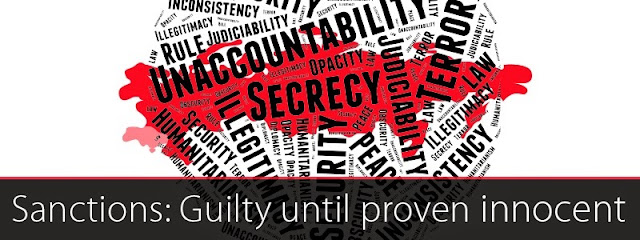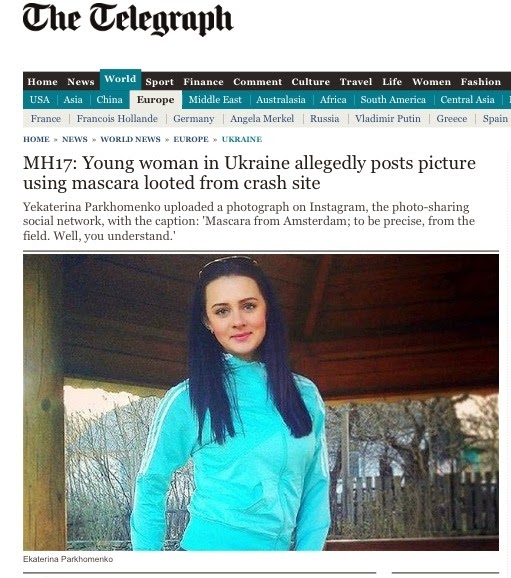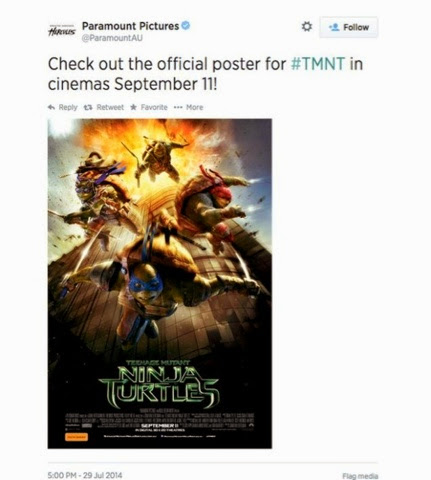Larry Ford was a regular at those gatherings, and the technology he handed over that day, Bouwer chortled, could prove invaluable: a sampler of virulent, designer strains of cholera, anthrax, botulism, plague, and malaria, as well as a bacteria he claimed had been mutated to be “pigment specific.” “Kaffer-killing germs,” Bouwer confided, using the derogatory Afrikaans term for blacks. “Dr. Ford has done my country a great service.”
The Assassination of Dr. David Kelly of MI6 and Porton Down has deep roots
Dr David Kelly knew too much and died rather mysteriously.
Police have now admitted that the following objects found with his body did not have fingerprints on them:
His mobile phone
A watch
The knife he allegedly used to slash his wrist
The packs of pills he is said to have overdosed on
A water bottle
A secret file of evidence was submitted to the Hutton inquiry by Thames Valley Police.
The contents remain secret.
But 'the cover is publicly available and reveals that the codename for the investigation was Operation Mason.'
This has given rise to 'rumours of a freemasonry angle'.
The start time of Operation Mason is given as 2.30pm on Thursday July 17.
That was at least half an hour BEFORE Dr Kelly set off from his home on his fatal walk.
And, it is nearly ten hours before Dr Kelly's wife rang the police to sound the alert over her missing husband.
The Medicine Man
July, 2001
From Los Angeles Magazine
By Edward Humes
LARRY FORD WAS A BRILLIANT SCIENTIST BENT ON SAVING THE WORLD FROM DISEASE AND MISERY BUT IT WASN’T THE IRVINE DOCTOR’S LAB WORK THAT SPARED THE MOST LIVES. IT WAS HIS SUICIDE.
THE MEETING AT THE BEVERLY HILLS MANSION OF THE SOUTH African trade attache was unusually secretive, but Peter Fitzpatrick still managed to witness it, peering from an adjacent room through a massive shared fireplace. He watched as Niel Knobel, deputy surgeon general of South Africa — the white-ruled, apartheid South Africa of 1986 — met Larry Ford, a noted Los Angeles gynecologist and infectious disease specialist with an unofficial subspecialty: biological and chemical warfare. The two spoke in hushed tones, then Ford, a devout Mormon who volunteered his services to missionaries and Boy Scout troops, passed over a hefty black satchel. The meeting came to a close. Later Fitzpatrick sat down with the boisterous trade attache, Gideon Bouwer, who could not resist explaining in his thick Afrikaans accent what had just happened.
The white minority government of South Africa was in those years locked in a bloody struggle with its black citizens, willing to do anything to stay in power. Bouwer’s role was to thwart the U.S. trade embargo on technology and expertise coveted by the apartheid regime; Fitzpatrick, a young actor, glib and personable, was part of Bouwer’s informal embargo-busting team, making sure the parties at the mansion were well attended by the well-connected.
Larry Ford was a regular at those gatherings, and the technology he handed over that day, Bouwer chortled, could prove invaluable: a sampler of virulent, designer strains of cholera, anthrax, botulism, plague, and malaria, as well as a bacteria he claimed had been mutated to be “pigment specific.” “Kaffer-killing germs,” Bouwer confided, using the derogatory Afrikaans term for blacks. “Dr. Ford has done my country a great service.”
Fitzpatrick clinked glasses with Bouwer and left, then called his handler at the FBI, where he served as one of two informants planted at South Africa’s Los Angeles consulate. He told the FBI everything; yet, he says, nothing was done. According to Fitzpatrick, the deputy surgeon general flew off with his suitcase full of death. “Why didn’t you guys stop him?" he later asked his handler. The agent just stared at him.
FIFTEEN YEARS PASSED. APARTHEID WAS DEAD. THE FBI HAD long since lost interest in its old informant, and Peter Fitzpatrick was sitting on his couch talking with his wife, the television set muted as the evening flashed by. Then something on the screen caught his eye: a grainy photo of a jut-jawed, narrow-eyed, round-shouldered man he hadn’t seen in years — Dr. Larry Ford. He turned up the volume and heard a reporter explain how Ford, co-owner of an up-and-coming biotech firm, had become a prime suspect in the attempted murder of his business partner. That stunned Fitzpatrick, but what had him scrambling to his feet and reaching for the phone were images that followed Ford’s photo: policemen searching the doctor’s Irvine home — unprotected.
“Oh my God, they have no idea what they’re getting into,” Fitzpatrick exclaimed. It all came back to him then: Ford’s talk of bio-weapons and booby traps, his hoard of guns and explosives, not to mention the doctor’s claims of doing dirty work for the CIA — stories Fitzpatrick had once dismissed as a nerd’s Walter Mitty fantasies until he noted the FBI’s official hands-off policy with the suitcase of germs. “I’ve got to warn them,” he told his wife.
So for the first time in many years, Fitzpatrick called the FBI. And once again, no one there seemed interested in what he had to say.
WHEN A MASKED ASSASSIN PUT A BULLET into James Patrick Riley’s head in front of his office on February 28. 2000, the case at first unfolded as a classic story of greed and envy, a corporate power struggle between Riley, the voluble CEO and marketing whiz, and his partner, Dr. Larry Creed Ford, the visionary with big ideas and the scientific skills to carry them out.
Ford was working on a combination contraceptive and microbicide he and Riley named Inner Confidence,” a suppository that promised not only to revolutionize birth control but also to prevent HIV infection, AIDS, and almost every other sexually transmitted disease. Ford liked to say they were going to save the world — and get rich in the process. Their Irvine company, Biofem Inc., could capture annual sales worth some $400 million. Riley told investors. The profits, in turn, would fund Ford’s true passion of the past 12 years, a secret Biofem project to develop a superantibiotic derived from what he called “Unidentified Amniotic Fluid Substance.” He believed it was nature’s way of protecting embryos from disease, the reason HIV-negative babies can be born to HIV-positive mothers. Ford hoped to synthesize the substance, saving countless lives, and earning him a Nobel Prize along the way.
But Ford had come to resent his decade-long partnership with Riley, who had final say in every Biofem decision and who had the physician bound to a contract so sweeping — giving him a 50 percent share of any idea or product Ford might conceive — that one lawyer likened it to indentured servitude. The agreement snuffed out Ford’s attempts to make lucrative outside deals, and so, police and prosecutors have alleged, he decided Riley had to die.
Riley had just emerged from his blue Audi and was walking to Biofem’s offices on a Monday morning when the gunman approached and fired. A chance turn of the businessman’s head sent the bullet through his left cheek instead of his brain. “I have no doubt I would be dead if not for that,” Riley said recently, a faint, nickel-sized scar marking the bullet’s point of entry. After crumpling to the hot asphalt, he staggered back to his feet, blood gushing, pulled out his cell phone, and called the one person he knew could help — his friend and partner, Dr. Larry Ford. The doctor ran outside and applied pressure to the gaping hole in the side of the CEO’s face as they awaited an ambulance.
Within three days, however, Riley’s savior had become a prime suspect. After the first of several searches of his house — which turned up only documents — the 49-year-old gynecologist met for five hours with his lawyer, scribbling notes throughout the discussion. Then he returned home and retreated to his bedroom, where he carefully laid out a selection of firearms from his collection. He put a double-barreled shotgun in his mouth and pulled both triggers. His wife, Diane, heard the blast and the thump of his body on the floor and knew; she called the lawyer and the police without going up to see her husband. The authorities found beside him a rambling, nearly illegible five-page note — what he had been writing in the lawyer’s office — protesting his innocence. He had six different antidepressants in his system.
The Biofem case might have made the back burner then and there had Irvine police detective Victor Ray quit when his department and the FBI warned him to. But Ray, a former sonar technician on navy submarines, a job that requires patience and persistence, would not give up. He steered the investigation to Ford’s backyard, where men in Andromeda Strain suits would evacuate a neighborhood and haul away an arsenal of toxins, germs, plastic explosives, and guns. In the process they unearthed a trail that stretched all the way from the CIA to apartheid-era South Africa and Dr. Wouter Basson, the man who ran the country’s clandestine bioweapons program.
The question still plaguing federal, state, and local investigators is a simple but urgent one: What was Ford planning to do with his germs and bioweapons expertise? The discovery of militia-movement and racist literature among Ford’s papers has raised the possibility that he offered biological or chemical weapons to terrorist groups. Concerns have also mounted over a patented feature of his Inner Confidence suppository: the microencapsulation of beneficial bacteria. It turns out this architecture could double as an ideal delivery system for bioweapons, allowing otherwise fragile disease organisms to be seeded virtually anywhere. Ford, in essence, had patented the prescription for a perfect microscopic time bomb.
“That,” says Ray, “scares the hell out of everyone.”
ONE OF LARRY FORD’S FAVORITE STORIES ABOUT himself dated back to his teenage years, after he won first place in the International Science Fair in 1966 for his studies of radiation exposure. Awards from the Atomic Energy Commission and the defense department followed. Next came an invitation to continue his research in a government laboratory.
So there was young Larry in his buzz cut, canvas low-tops, and high-water pants in a military lab back east, starting a new set of experiments. He was giddy about the turn his life had taken — until he walked in one morning and found that, overnight, he had accidentally killed every lab animal in the facility.
“I thought I was in for it then, that I would be washing dishes the rest of my life,” Ford would say. “But when the general called me in, all he asked was, ‘Can you do it again?’” Ford did it again, and a longstanding affiliation with the government had begun.
The invitation to work in the government laboratory had come from a man Ford identified only as General Wyman. He liked to show people a framed photo of the general and himself (with Ford in an army uniform, though records show he was never in the military). This offer to an 18-year-old about to enter college did not seem all that unusual to Ford or his blue-collar parents. He had, after all, earned lab privileges at Brigham Young University in his hometown of Provo, Utah, at age 12, according to Riley.
Ford told the Rileys and others his subsequent work for the military and the CIA included research on biological and chemical weapons, consulting on Iraqi capabilities during the Gulf War, and sneaking into epidemic hot zones in Africa to gather samples of such killer organisms as the Ebola and Marburg viruses.
Victor Ray, a compact man with thinning hair who has been on the Irvine police force for ten years, initially discounted most of Ford’s claims as the nutty imaginings of an unbalanced genius. It’s not that Ray hadn’t handled unusual cases in the past. He was the detective assigned to the headline-grabbing case in which an “evil twin” allegedly plotted to murder her sister and take over her life.
But the bungled attempt on Riley’s life suggested something far more mundane, and quite a bit less, than the work of a CIA-trained operative. Almost any other time and place for a hit would have been better than the crowded commercial parking lot in front of Biofem’s offices in the Irvine Spectrum, which sits wedged in the busy “golden triangle” where the Santa Ana and San Diego freeways merge. An experienced hit man might have simply pulled up next to Riley’s car in an isolated location and opened fire on a caged target, Ray suggests. This guy, in his black clothes and mask, waited in a public place at ten in the morning for Riley to get out of his car, then shot him with a $70 Russian-made semiautomatic known for jamming, which probably explains why only one round was fired.
The hit man, described by witnesses as a slim and athletic man with blond hair peeking out of his ski mask, sprinted across the office plaza brandishing his gun, running directly in front of the Spectrum Bank branch below Biofem’s second-floor suite. Suspecting a robbery, bank employees locked their doors and watched the man jump through the side door of a silver Aerostar van.
Police traced the plates and the van to an old friend of Ford’s with a violent past, Dino D’Saach, who was arrested that night as the getaway driver and has since been convicted of attempted murder and conspiracy, crimes carrying a mandatory 26-year sentence. His cell phone records showed him talking to Ford immediately before and after the hit from a cell location near Biofem. (Biofem’s receptionist remembers seeing Ford on the phone at his office window just before the shooting, with a perfect view of Riley’s parking space.) Police found private Biofem correspondence fixed from Ford to D’Saach’s South-Central Los Angeles tax preparation business, along with hit-man manuals, photos of Riley’s parking spot, and a crude homemade silencer.
If the crime wasn’t enough to reject the CIA stories, Ray figured, there was Ford himself. Disheveled and disorganized, known for his painful lack of conversational skills ("He could light up a room just by leaving,” Fitzpatrick says), Ford came off as both a brilliant researcher and a childish eccentric. The only shoes he wore were black Converse All-Stars, no matter the occasion, and he was known to skip through hospital hallways, pepper his speech with expressions like yippee and okeydokey, and issue prescriptions with a trademark cliche, “Better living through chemistry!"
None of his friends or family, not even Riley, sitting in a hospital bed with his face a swollen pumpkin, thought Ford capable of murdering anyone. His wife and three college-age children — who declined to be interviewed for this article — saw only a devoted family man whose worst “sin” was a fondness for diet cola, a violation of Mormon prohibitions against imbibing caffeine.
“Everyone who knows him knows who he really was,” Ford’s eldest son, Larry Jr., told the Deseret News in Utah shortly after the suicide. “He was the most loving, giving, loyal person.” Larry Jr. suggested that his father killed himself not out of guilt but “out of love, because he wanted to protect his family from what was eventually coming.”
Ford graduated magna cum laude from BYU, published more than 65 articles, held numerous patents in medicine and biochemistry, had an international ob-gyn award named for him, and bulk a patient list that included doctors and a smattering of celebrities (although one, the late Margaux Hemingway, overdosed on barbiturates Ford provided).
“Look at his background,” says Dr. Hunter Hammill, an associate clinical professor at Baylor College of Medicine and a Biofem consultant, who served his medical residency with Ford at UCLA. “He was the chief resident. He was good. He was so bright, you’d ask him about a compound, he could describe for you the whole formula, how to build it, its structure — he had it memorized. He was the golden boy.”
But during his residency there was at least a hint that all was not quite right in Ford’s life. One night in a campus parking lot in 1978, a gunman opened fire on him. He let off five rounds, though only one struck Ford, square in the chest. He was saved by several cassette tapes he had stuffed into his breast pocket, just enough to deflect the small-caliber bullet, leaving only a bruise over his heart. There had been no robbery attempt. The doctor was evasive when questioned by police, and no one was ever arrested.
* * *
ONLY AFTER FORD’S SUICIDE DID INFORMANTS START coming forward. Ray and his sergeant, Tom Little, began hearing about an entirely different Larry Ford, a man who cheated on his wife, betrayed his partner, and bred super-germs and was willing to use them. This was the Larry Ford who formed a close bond with Dr. Jerry D. Nilsson, a gifted Anaheim general surgeon with extreme views and a penchant for trouble that quickly made him a suspect in the Riley shooting. Nilsson, who boasted of having worked as a special forces physician for the white minority government of Rhodesia, now Zimbabwe, appears to have kindled Ford’s interest in supporting apartheid. At the time of Ford’s suicide, Nilsson was in the process of losing his license for sexual misconduct with patients, one of them a 14-year-old who allegedly became his lover for the next 15 years.
Whenever the two doctors were together, it was the charismatic Nilsson who made the most lasting impression. Now 72, the surgeon was a formidable presence even in late middle age. Tom Byron worked with Fitzpatrick as an FBI informant in the South African Consulate in the 1980s and spent time with both doctors. He describes Nilsson as “the monster with miracle hands,” a towering figure with a shaved head — Jesse Ventura as a skilled surgeon. “He was very fit, very muscular, the kind of guy who could knock you out with one punch,” Byron says. “He told me, `I’ve killed people in my lifetime, and I have no qualms about killing again.’ I would never cross that man.” Nilsson was not available for comment.
Nilsson had long worked with Ford to amass biological and chemical weapons, and both doctors stored them openly in their homes, his ex-lover told the FBI. She sued Nilsson and won a confidential settlement after accusing him of performing unnecessary surgeries on her, including cosmetic enhancement, without her permission. She was also treated by Ford and was one of several former patients who told Ray that the gynecologist used them as lab rats, deliberately making them ill in order to test his remedies. “If taking a life advances scientific knowledge,” Ford would tell her, “the sacrifice is well worth it.”
The detective spoke with a Los Angeles gun-shop manager, a longtime friend of Ford’s, who developed a complex of rare diseases, among them a chronic lung and immune system disease, sarcoidosis, that is extremely uncommon in every racial group but one: African Americans. The man is white, and he is convinced Ford had a hand in his ailment. There was a woman with cervical cancer whom Ford treated with an experimental drug that didn’t work; she later required emergency surgery to save her life. Other women, Ray learned, had been given prototypes of Inner Confidence that were never intended for human use. All of them fell ill with a variety of vaginal infections, he says.
“Riley was told there was no product, that it was still being developed, but I have one in a jar sitting in my office that Ford gave to a patient,” Ray says. “He was experimenting.”
More people came forward. A former business associate of Ford’s said that when a mistress broke up with Ford in the early 1980s, the doctor vowed to infect her with an “alpha bug,” promising “she will never be healthy or normal again.” Authorities talked to the woman and learned that she suffered from a mysterious and incurable malady that has caused debilitating vertigo for the past 14 years. She’s undergone two brain surgeries just to ease the symptoms. At least one other woman, who maintains that Ford drugged her against her will during a business lunch, has reported similar problems with chronic vertigo and complained of symptoms that resemble Gulf War Syndrome, except she was nowhere near the war.
State and county health officials, with help from the Centers for Disease Control in Atlanta, interviewed many of these patients, but their investigation was limited to whether there was a public health risk, such as the threat of an epidemic. They found none and closed their inquiry, though the FBI still makes at a point to ask former patients of Ford’s if they were ever unconscious in his presence, something the complaining patients all have in common.
“We started to realize there was a lot more to Dr. Ford than we had first thought,” says Ray. “It began to look like there might be something to the stories he told, and that the attempt on Mr. Riley’s life was just the tip of the iceberg.”
In 1997 Ford’s long association with UCLA, the school where he had been a clinical professor and director of research for the Center for Ovarian Cancer, abruptly ended. He had been caught disposing of blood samples in a trash can in the middle of a chemistry lab instead of taking the biohazard precautions required by the university. Later he was spotted scraping petri dishes into a toilet, another health hazard. The school asked him to vacate the lab and never come back, according to Rick Greenwood, director of UCLA’s Office of Environment, Health, and Safety.
Greenwood, who knew Ford in graduate school, describes him as an arrogant, single-minded know-it-all incapable of admitting mistakes, as when he accidentally killed two rabbits while trying to extract blood from them, then insisted that it was the animals’ fault.
A biochemist who worked with Ford at both UCLA and Biofem says Ford also faked research results — what the science community calls “dry-labbing.” “I could never replicate his results when I would repeat his procedures,” he says. To be associated with Ford now, he explains, would be professional suicide, and he is unwilling to be identified in this article. “The sloppiness was unbelievable. His technique was awful. I ended up deciding I didn’t want anything to do with him.”
One of the most chilling stories Ray heard came from the owner of Chantal Pharmaceuticals of Los Angeles, a company that developed an antiwrinkle cream with Ford’s help. She told the FBI that Ford, angry with one of her partners, went into the man’s office carrying a cardboard box with a rabbit inside. He put the box on the man’s desk, pulled on latex gloves, removed a syringe from his pocket, and squirted two drops of a viscous amber liquid onto the rabbit’s shoulder. It immediately convulsed and died, blood pouring out of its nose and ears. Ford, never uttering a word, turned and left, the box still sitting on the desk.
* * *
RAY GOT CONFIRMATION OF THE DOCTOR’S GOVERNMENT ties three days after the case was opened and a few hours after Ford’s suicide. He had picked up Valerie Kesler, Ford’s research assistant at Biofem, for questioning. She met Ford while an undergrad at UCLA, and the two had been lovers for most of the past 18 years. The night of the shooting, she spent hours deleting Ford’s files from Biofem computers, according to James Riley’s wife, Pam, who is the company’s business manager. (Kesler’s attorney, John Kremer, says that any files that may have been deleted had nothing to do with the shooting.)
Kesler denied knowing anything about the attempt on Riley’s life. Later, however, her lawyer suggested officers exercise caution opening up a gym bag in the trunk of her car, which Ray had impounded. Kremer had been told that it might contain firearms and a knife dipped in ricin, a deadly toxin synthesized from castor beans. A drop in the bloodstream was all it took to kill. Ray and his superiors called in the FBI, whose Weapons of Mass Destruction Response Team is charged with dealing with biological and chemical threats.
According to Ray, the agent in charge of the team mocked the notion that Ford was connected to bioweapons research and the CIA. But with Ray insisting that the information seemed good, that it matched other accounts, the agent agreed to contact the FBI liaison to the intelligence agency. In about ten minutes a call came back: The CIA knew of Ford.
The CIA knows a lot of people, the agent laughed. They probably know my grandmother. But ten minutes later the liaison called again and said there was “high confidence that Ford had biological- and chemical-weapons knowledge and did, in fact, have the capability to coat the knife with a deadly toxin. Shortly after that a third call came in: Ford did work for the CIA, the chastened FBI official told the room full of cops.
There was no more laughing after that. The men in space suits took over. Searchers found an Uzi and another illegal firearm in the gym bag; the knife was plunged into decontaminating fluid before it could be tested, which allowed the authorities to make the calming announcement that they had found no dangerous substances in the car. But a jar of ricin turned up later in Ford’s home.
While this drama unfolded in Irvine, Peter Fitzpatrick was trying to get through to someone, anyone, at the FBI who would listen to his recollections of Ford’s involvement with biowarfare in South Africa. No one was available, so he went to the FBI’s bureau in West L.A., where he was turned away by the receptionist. “Basically,” says Fitzpatrick, “they said they didn’t know who the hell I was and that I should go.” Next he called the Orange County District Attorney’s Office and asked for the prosecutor assigned to the Ford case, but ended up trapped in voice mail. He left an exasperated message, then hung up.
The next day, to Fitzpatrick’s surprise, two FBI agents met at length with him to discuss his information about Ford, bioweapons, and South African surveillance. Then two things happened: First, the weapons team showed up to do another high-risk search and excavation of Ford’s home. They uncovered nearly a hundred firearms, most of them shotguns and rifles, 17 of them illegal automatic or semiautomatic weapons, including four Uzis, an M16, and a gangster-era Thompson submachine gun.
Ford had stowed the illegal weapons in six large plastic cylinders buried in his backyard, along with thousands of rounds of ammunition — something his family apparently did not consider unusual, though they were unaware that one canister contained a large supply of the powerful military explosive C-4. The plastic explosives were packed with blasting caps and secreted dangerously close to electrical wires. Some 52 homes and several hundred people had to be evacuated to the Hyatt Regency for three days (it was, after all, Irvine — no Red Cross sleeping bags in the school gym for this crowd).
At the same time, Detective Ray expressed interest in talking to Fitzpatrick and Byron in order to explore the South African angle, but he and his partner, Sergeant Little, were forbidden to do so by the bureau and forbidden to come near Ford’s house. Their department pulled the reins even tighter. “[They thought] we were crazy, we were imagining things,” Ray says. “They said we had been working too long without enough sleep. It stunk. But we were off the case.”
* * *
NOW A CLERICAL WORKER FOR A Beverly Hills law firm and an aspiring screenwriter, Peter Fitzpatrick was a television and stage actor in the mid 1980s when he struck up a friendship with Gideon Bouwer, the South African trade attache in Los Angeles. He had written Bouwer asking for help financing a hearing aid that Tom Byron, an out-of-work engineer friend, had thought up. The attache, always in the market for any piece of new technology to squeeze past the trade embargo, agreed to meet them.
Early into the meeting, Bouwer, an imposingly large man, began spouting racist rhetoric. Fitzpatrick didn’t blink, sensing this was a test of sorts. He leaned back in his chair, crossed his legs, and smiled at Byron. “You’re among friends,” he told Bouwer, and just like that, they were in.
The pair became regulars at the consulate and at the attache’s home, where senior officials from local defense contractors and pharmaceutical companies, along with minor celebrities, would frequent the parties, barbecues, and dinners Bouwer hosted to forge informal ties to get around the embargo. Each man was recruited independent of the other to feed information to the FBI but eventually learned of their mutual mission. Byron helped plant electronic surveillance devices for the bureau.
Both informants say that Ford, Nilsson, and Ford’s mistress, Kesler, were regular guests at Bouwer’s mansion, and Byron remembers encountering Dino D’Saach, the getaway driver, at several gatherings. Indeed, Ford and Nilsson’s connection to South Africa ran deep. The two doctors went on big-game hunts beginning in the early 1980s — about 20 stuffed trophies lined the walls of Ford’s home — and, as Ford and Nilsson told it, they did charity medical work there.
Later Ford began smuggling into the U.S. distilled human amniotic fluid collected by South African doctors for Ford’s antibiotic research. They would hide the biologically hazardous body fluids in wine and liquor bottles to avoid impoundment. Riley, in testimony in the D’Saach trial, described one trip in which a bottle of amniotic fluid broke inside a suitcase while in flight, creating a noxious odor that permeated the aircraft.
Ford and Nilsson were befriended by South African deputy surgeon general Dr. Niel Knobel. Ford began advising him on protecting troops from biological attack, as well as suggesting AIDS prevention programs in a country that today has the worst AIDS infection rate on earth — benign and praiseworthy endeavors that Knobel maintains had “no political agenda.” But the AIDS prevention program was for whites in the military, not blacks. A secret right-wing South African organization, the Broeder-bond, conducted studies around this same time that suggested the AIDS epidemic could make whites the majority in the future.
Since then, through the new government’s Truth and Reconciliation Commission, which was formed to probe the abuses of apartheid, information has surfaced about a secret South African bioweapons program. Code-named Project Coast, it was run by another Ford friend and financial benefactor, Dr. Wouter Basson; Knobel had administrative oversight. Basson’s alleged ties to hundreds of poisonings and assassinations in South Africa and in the neighboring countries of Angola and Zimbabwe earned him the nickname Dr. Death in the South African press.
Documents indicating he had arranged an offshore bank account for Ford were found in Ford’s papers after his death.
The commission uncovered evidence that whole villages, including an Angolan settlement of several hundred people suspected of harboring rebels, may have been decimated by Project Coast weapons. This finding parallels information Nilsson’s ex-girlfriend provided: She said Ford more than once boasted of wiping out an entire Angolan village during a civil war. (She claimed Ford had been talking with Nilsson in 1996 about obtaining a missile or bombing system from former Soviet bloc nations that might be used to deliver biological weapons.)
Project Coast scientists called to testify against Basson have said Ford was brought in to brief them on the use of biological weapons in mass attacks and discrete assassination, the latter through the contamination of ordinary items such as Playboy magazines and tea bags. One scientist involved with South African bioweapons development noted that Ford’s ideas — and arrogance — were not well received, and that his work was given little credence in the Project Coast lab. However, Ford continued to work with Basson and Knobel, who had a picture of him hanging in his den at the time of the suicide.
According to a recent U.S. Air Force Academy report on South Africa’s biological warfare program, Ford was part of a global network of scientists that Basson assembled to assist Project Coast. Whether that meant creating — or receiving and storing — toxins produced by the program is a matter of conjecture, the report suggests, as South African officials have been unable to account for all of the dangerous material produced over the years. The air force report quotes testimony from a Swiss intelligence agent who laundered money for Basson and who describes a worldwide conspiracy involving unnamed Americans.
“The death of Dr. Ford and revelations of his South African involvement,” the report states, “[raises] the possibility of a right-wing international network, [still] united by a vision of South Africa once again ruled by whites.”
In the wake of Ford’s suicide Fitzpatrick and Byron reminded a new set of FBI agents about the meeting between Ford and Deputy Surgeon General Knobel, in which the satchel of deadly germs was allegedly passed over to the South African — and about the fact that nothing was done to intercept Knobel as he returned to South Africa. Once again no explanation was offered. Byron suggested reviewing the surveillance recordings from the bugs he and Fitzpatrick helped plant so long ago. “You can get a blockbuster out of those, I’m sure.”
“Not even we can get those tapes,” he remembers the agent responding. “They’re sealed. National security.”
Matthew McLaughlin, spokesman for the FBI in Los Angeles, says the bureau’s policies bar him from confirming or denying Byron’s and Fitzpatrick’s accounts. Nor will he comment on their allegation that the government permitted Ford to illegally develop and traffic in bioweapons.
McLaughlin does caution, however, that there are often reasons criminal activity is allowed to go on in order to preserve an investigation, and that no informant in any case has the whole picture. “We compartmentalize people we work with, and they are not privy to the breadth and width of a case,” he says. “They see the elephant’s toenail.”
Of course, Byron and Fitzpatrick say trade attache Gideon Bouwer was clear in their conversations 16 years ago about what had happened in the meeting with Ford. They say he raved about the ability to keep whites in power through biological warfare, and he hinted at being part of a separate agenda — some sort of extragovernmental conspiracy, like the one described in the air force report, that had plans to unleash biological agents worldwide on South Africa’s enemies if the need should ever arise.
“Just be ready,” Fitzpatrick remembers Bouwer warning him cryptically, then asking, “How fast could you get your daughter out of the country if you had to?"
“I have to be honest,” Fitzpatrick says. “Gideon could be a great guy. But there was something dangerous about him. And when he started talking about that master plan, about what a great service Ford had done for his country, about getting out of the country, it gave me chills.”
Niel Knobel has admitted meeting with Ford at the attache’s home in the period Fitzpatrick and Byron describe but denies any involvement with biological weapons.
The informants never found out what happened after that meeting between Ford and Knobel. Bouwer fell from favor less than a year later, apparently considered a security risk by his own government. He was recalled, and the visits by Ford and Nilsson to the consulate ended, as did Byron’s and Fitzpatrick’s work there. Bouwer died ten years ago in South Africa.
Looking for answers, Fitzpatrick recently used the Freedom of Information Act to obtain his FBI file. All but the captions were redacted from the small ream of reports detailing his information about Ford and the South Africans. But those captions clearly show one thing: Whatever Fitzpatrick told his handler was immediately forwarded to FBI headquarters in Washington, and then it was dispatched to the CIA.
* * *
VICTOR RAY AND TOM LITTLE WERE BROUGHT BACK on the Ford case after a week, once it became clear that he had not been off-base about a possible CIA connection and that he had developed sources the FBI wanted — sources he wasn’t going to give up unless there was mutual cooperation.
After some initial tug-of-war the Irvine police and the FBI are working well together, Ray says, but there have been disagreements. He could only get to Byron and Fitzpatrick through an L.A. Times reporter whom Fitzpatrick had called, rather than through the FBI, which declared them off-limits. And it is Ray, not the FBI, who has kept pushing to widen the investigation, expanding it to other suspects and states, securing out-of-town search warrants the FBI said couldn’t be obtained, locating a key witness the FBI believed to be dead. It appears that Irvine’s small police department is the main reason an international investigation is now under way, one that started with an Orange County grand jury probe and that now appears headed for a federal grand jury.
So far the only public charges have revolved around Riley’s shooting. Besides D’Saach’s attempted-murder conviction, Kesler has been charged with weapons violations for the guns found in her car. She remains a suspect in the shooting, as does Nilsson, whose home was searched but who has not been charged. The gunman remains unidentified.
Biofem, meanwhile, is still trying to recover from the loss of Ford. The Unidentified Amniotic Fluid Substance project, which Riley only reluctantly admitted existed when called to testify against D’Saach, may well die without Ford. Inner Confidence is moving forward, but FDA clinical trials, which were supposed to have begun by now, have been postponed. Investors can’t be happy about the revelations concerning Ford, and Riley fears the delay has opened a window to rival products, since interest in microbicides as a means of battling HIV has grown intense in the last year or two.
The search of Ford’s house unearthed more than 260 containers of biological material, most of it in a refrigerator in Ford’s garage, along with the jar of ricin, the substance Kesler said the knife had been dipped in. Authorities found it in his family room. Botulism, which produces one of the deadliest toxins known, was recovered from a refrigerator at Biofem, stored by Ford next to a bottle of ranch dressing.
These discoveries were followed by reassuring statements to the public that the doctor’s illegal brew of germs was aged and posed little danger. But internal FBI reports state there was a genuine public health hazard, and Dr. Mark Horton, head of public health services for Orange County, concedes that, had the materials been handled without great care, they could have imperiled the community.
It turns out that the assurances were based on the testing of only 16 of the samples — there has been no official accounting of what was in the rest. The public statements did not even mention the botulism.
Ray has no doubt that the danger was severe. He notes that many of the biological samples in Ford’s home were stored next to a jar of what was suspected to be old and chemically unstable ether. “If that ether had been exposed to a higher temperature, it would have exploded,” he says, “and Larry Ford’s chemistry set would be blown all over Irvine.”
His disgust over the case almost led him to leave it for good last summer. He was away all the time, his wife was complaining; the stress was enormous. “It really made me think ... what in the hell was going on and how could the government have stood by while Ford ... did these things? I really wondered if there was anything that I could or should do.”
He took two trips to Washington, D.C., that summer, the first to wander alone among the monuments, the Arlington cemetery, the Vietnam and police officers’ memorials, looking for inspiration. During their second trip, Ray and his wife decided he should continue the case. “It’s hard to stand among so much history of personal sacrifice and say, ‘I’m more important,’” he says.
But reality was not far behind. While at the capital, he tried to make contact with officials at the South African embassy, to pass on his information about Ford and Dr. Death’s financial dealings and offshore accounts. Prosecutors in South Africa had been desperately trying to hold their case together, Ray knew, and the records he had found could have helped. But no one, he sighs, was the least bit interested.
